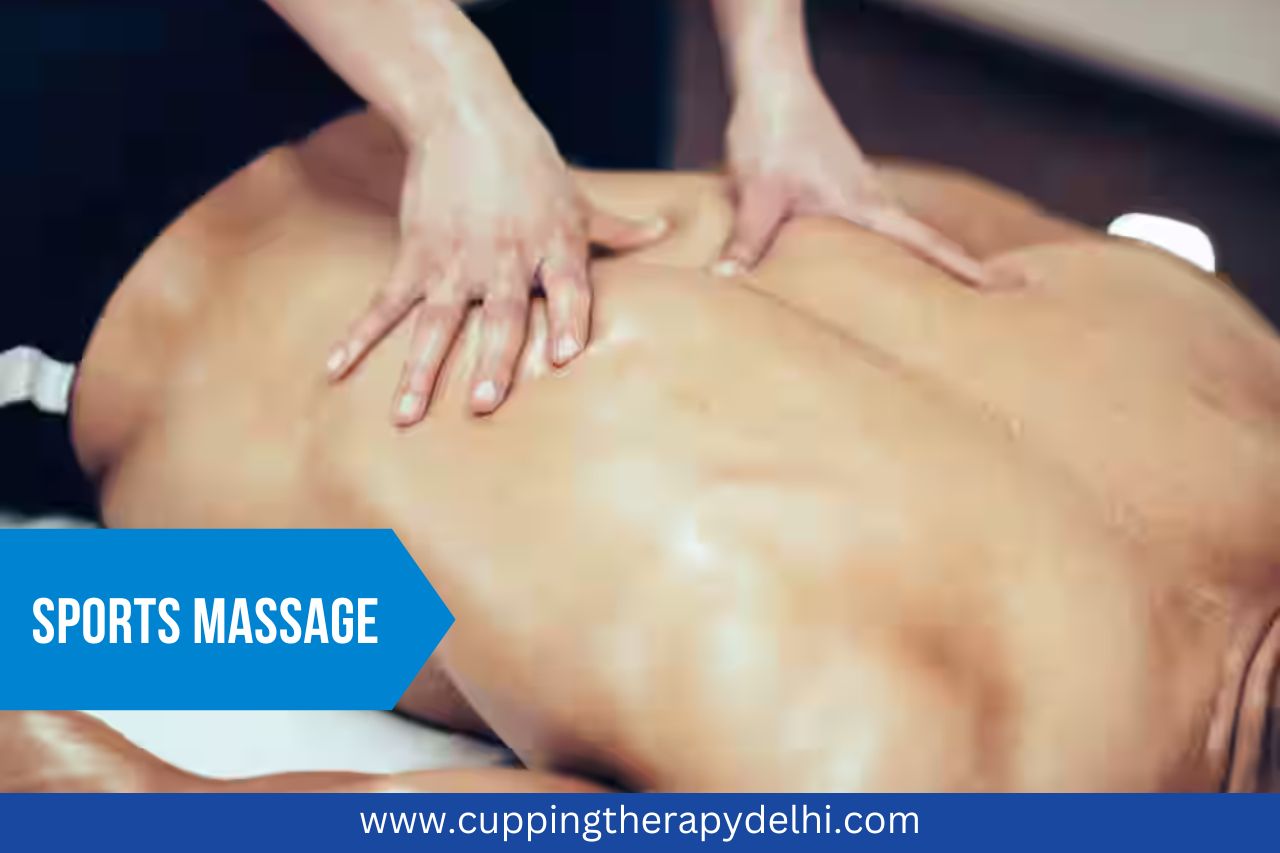
Sports massage is a specialized form of massage therapy designed to enhance athletic performance, prevent injuries, and aid in the recovery process for athletes. It focuses on the needs of athletes and active individuals, addressing muscle imbalances, improving flexibility, and promoting overall physical well-being.
Procedure
- Consultation: The therapist discusses the athlete’s specific needs, training regimen, and any existing injuries or areas of concern.
- Warm-Up: The session often begins with general massage techniques to warm up the muscles and prepare them for deeper work.
- Targeted Techniques: The therapist employs various techniques tailored to the athlete’s needs, including:
- Effleurage: Long, sweeping strokes to warm up the muscles and enhance circulation.
- Petrissage: Kneading and squeezing to release muscle tension and improve flexibility.
- Friction: Deep, circular movements to break down adhesions and scar tissue.
- Tapotement: Rhythmic tapping to stimulate muscles and nerves.
- Compression: Applying sustained pressure to relax and lengthen muscles.
- Stretching: Incorporation of passive and active stretching to improve range of motion and prevent injuries.
- Cool Down: The session concludes with gentle techniques to relax the muscles and promote recovery.
Benefits and Uses
- Enhanced Performance: Regular sports massage can improve athletic performance by increasing flexibility, reducing muscle tension, and enhancing overall body function.
- Injury Prevention: By addressing muscle imbalances and improving range of motion, sports massage helps prevent common athletic injuries.
- Faster Recovery: Helps speed up recovery after intense training or competition by reducing muscle soreness and promoting faster healing.
- Pain Relief: Effective in relieving muscle pain, stiffness, and discomfort associated with athletic activities.
- Improved Circulation: Enhances blood flow to muscles, aiding in nutrient delivery and waste removal, which is crucial for muscle health and recovery.
Considerations
- Frequency: The frequency of sports massage sessions depends on the athlete’s training schedule, intensity, and individual needs. Some athletes benefit from weekly sessions, while others may require more or less frequent treatments.
- Timing: Sports massage can be performed before, during, or after athletic events, each with specific benefits. Pre-event massages are typically lighter to warm up muscles, while post-event massages are deeper to aid recovery.
- Side Effects: Mild soreness or tenderness can occur after a sports massage, especially if deeper techniques are used. This is temporary and usually subsides within a day or two.
- Contraindications: Not recommended for individuals with certain medical conditions, such as severe cardiovascular issues, open wounds, or infections. Always consult with a healthcare provider before starting sports massage therapy.
Sports massage is a vital component of an athlete’s training and recovery regimen. It offers numerous benefits that enhance performance, prevent injuries, and promote overall physical health. Whether you’re a professional athlete or a recreational sports enthusiast, sports massage can help you achieve your fitness goals and maintain optimal body function.

